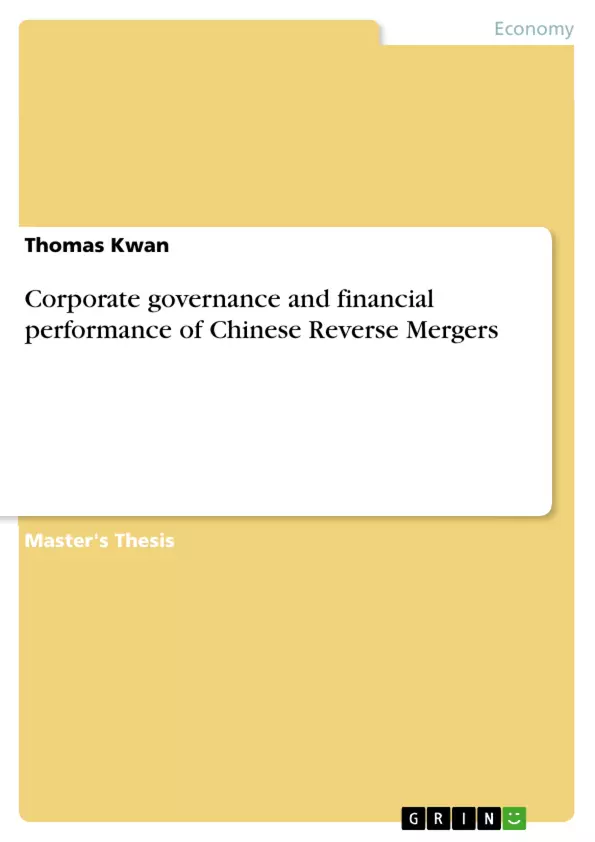Chinese Reverse Mergers are companies operating in China who listed on the US financial markets through a “backdoor” mechanism called reverse merger. The reverse merger process for going public consists in reverse-merging with a shell company in order to be listed on a stock market without going through the traditional IPO process.
This study will focus on the impact of corporate governance structure on the financial performance of CRMs. Through different external factors of governance (existence of a corporate governance committee, limitations on CEO removal, reputation of the statutory auditor, ownership structure), we want to observe whether the existence of corporate governance mechanisms have a positive impact on financial performance measured by Stock Returns.
- Quote paper
- Thomas Kwan (Author), 2014, Corporate governance and financial performance of Chinese Reverse Mergers, Munich, GRIN Verlag, https://www.grin.com/document/280181



